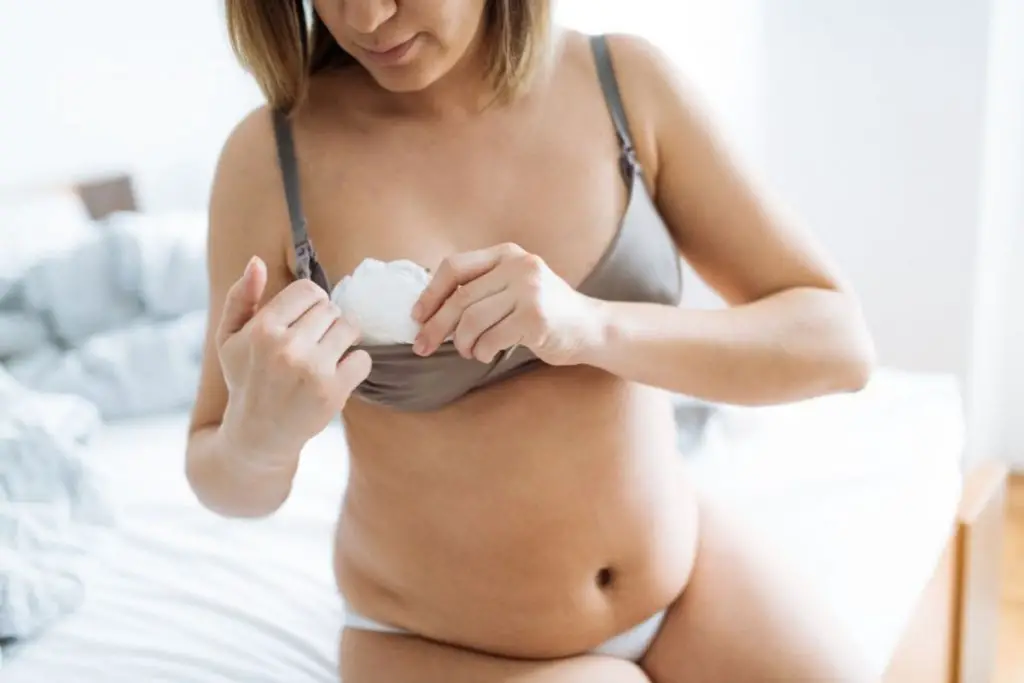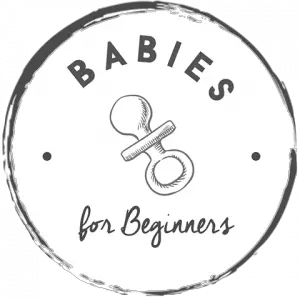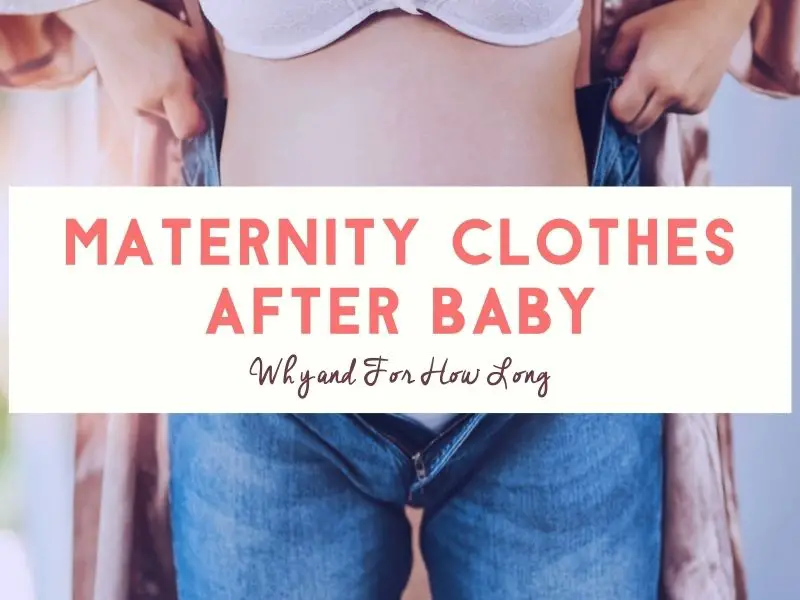If you’re thinking about packing pre-pregnancy clothes in your hospital bag to wear after your baby arrives, think again! Although your bump will be minus one beautiful baby after the delivery, it won’t be gone. Realistic expectations about the post-partum body are key when it comes to understanding how long you might need to keep wearing your maternity clothes.
So, how long can you expect to wear maternity clothes after giving birth? In general, you’ll likely find yourself wearing your maternity clothes for at least eight weeks after having your baby, though this will of course differ for each individual. Our body doesn’t miraculously ping back into shape after our baby is born (despite what the media might have you believe!) and maternity clothes offer a practical solution to the period of transition between the pregnant body and the post-partum figure.
How Long Will I have a Baby Bump Under My Clothing After Birth?
Expect to have a baby bump to accommodate under your clothing for a while after giving birth. Your baby bump will slowly reduce in size after you deliver your baby but this process can take up to two months as there are still many changes that need to take place before your body looks less pregnant, including:
- Uterus Contraction
Baby Centre advises that once you’ve delivered your baby, the uterus slowly contracts over 6-8 weeks under the control of your post-partum hormones. Because this shrinkage takes time, your enlarged uterus still contributes to having a bump after your baby is born.
- Extra Fluid
What’s more, during pregnancy, many of your cells swell up with extra fluid, it takes time for these fluid levels to come down as they need to be excreted via sweat and urine. Then, the additional fat that your body wisely laid down to nourish your baby will also take some time to disappear too. Breastfeeding and, when you’re ready to do so, some exercise will help burn this off. So, as you can see, there are plenty of very normal physiological factors keeping those pre-baby jeans on the shelf a little longer.
- Muscular Changes
As your bump grew during your pregnancy, your muscles had to stretch in order to accommodate your growing baby. These muscular changes can make your tummy look quite different after the birth and can contribute to the continued presence of the bump and then, as that shrinks, a pouch.
The NHS notes that many women experience diastasis recti (or, separated abdominal muscles) and this can change the appearance of your tummy post-partum. It’s really common for the abdominal muscles to separate as the uterus grows, and it can take up to 8 weeks for them to come back together and even out the appearance of the abdomen. (https://www.nhs.uk/conditions/baby/support-and-services/your-post-pregnancy-body/).

It’s clear then that there are a number of reasons why you’ll need to keep on wearing those maternity clothes, potentially for up to two months, based purely upon the normal rate of uterine shrinkage, fluid and fat loss, and muscle healing.
What Clothing Size Will I Be in The First Months Post-Partum?
Even after those initial two months of recovery, you might find yourself at a larger clothes size than you were before. Many women can retain and even gain weight post-partum. This means that even after those first few months (the fourth-trimester) of uterine shrinkage, fluid and fat loss, and muscle healing it’s common to need to keep wearing the earlier stage maternity clothes or new larger-sized “normal” clothes for a while longer.
Weight retention after having a baby is very normal – and that’s something new moms probably need to hear more often. According to this study in Obesity – A Research Journal, numerous studies in the past have reported the retention of weight in women post-partum. This study suggests that pregnancy-related changes to visceral fat may contribute to post-partum weight retention and even obesity.
Maternity Tops and Nursing Tops
One area where you’re going to see new growth post-partum is the chest. Whether you are nursing or formula feeding, in those first few days post-partum your breasts will experience engorgement. Though nursing tops are a popular choice, your old maternity tops or dresses are useful here as well. Since your breasts will be engorged and often painful, keeping them as comfortable as possible is the goal.
If you nurse, expect your breasts to be bigger than they were pre-pregnancy during your feeding journey (and to fluctuate in size every few hours too!) Those maternity tops can come in super handy if your pre-baby tops are a little restrictive.
Medical News Today suggests a nursing mom’s breasts will not only be larger whilst she’s feeding her infant, but after her baby weans too.
Don’t rush out to buy larger size clothes just because you’re sitting at a bigger size after your baby. Allow yourself those two months of recovery and, if you’re breastfeeding, this may contribute to weight loss in the months following the birth. For example, a study published in Preventative Medicine found that moms who exclusively breastfed for at least three months had a greater chance of returning to the same or lower BMI category as they were pre-pregnancy.
In light of all these perfectly normal physiological changes, expect to be a larger size than you were pre-pregnancy for at least a couple of months. Maternity clothes can bridge the gap between pregnancy and your new normal and save you from spending money on new clothes sizes that you might naturally shrink out of.
Maternity Clothing and Body Image Post-Partum
Wearing clothes that feel too tight and accentuate the parts of our body that we personally don’t want to accentuate is no fun at the best of times, but when you’re a new mom, entering a brand-new chapter of your life, it can be particularly distressing.
Maternity clothes are designed to accommodate for growth in the areas which tend to stay a little bigger post-partum – the hips/waist/abdomen region and the chest. By continuing to wear certain pieces from your maternity collection for at least a couple of months, you can feel far more comfortable and hopefully more confident. These clothes, cut to fit changing female body, stretch or allow for extra curves. They won’t make you feel like you’re wearing something which “doesn’t fit”.
Body image following birth is an important subject and we know this can contribute to declining mental health. Research published in BMC Pregnancy and Childbirth found that women have an unrealistic expectation of their post-partum body, with many finding it at odds with the socially constructed ideal body.
So far we’ve thought about the need to wear maternity clothes post-partum to comfortably fit a recovering body, but we can also continue to wear them to encourage a more positive body image, by wearing clothes that fit well and suit our body as it is right now.
References
Cho, G.J., Yoon, H.J., Kim, E.-J., Oh, M.-J., Seo, H.-S. and Kim, H.-J. (2011), Postpartum Changes in Body Composition. Obesity, 19: 2425-2428. https://doi.org/10.1038/oby.2011.163
Hodgkinson, E.L., Smith, D.M. & Wittkowski, A. (2014). Women’s experiences of their pregnancy and postpartum body image: a systematic review and meta-synthesis. BMC Pregnancy Childbirth, 14 (330). https://doi.org/10.1186/1471-2393-14-330
Leonard, J. (2019). How do breasts change during and after pregnancy? Medical News Today. https://www.medicalnewstoday.com/articles/325602
Marian P. Jarlenski, et. al.(2014). Effects of breastfeeding on postpartum weight loss among U.S. women. Preventive Medicine, 69: 146-150. https://www.sciencedirect.com/science/article/abs/pii/S0091743514003600
Rauch, C. Post-baby belly: How long you might look pregnant. BabyCenter. https://www.babycenter.com/baby/postpartum-health/post-baby-belly-how-long-you-might-look-pregnant_1152349

